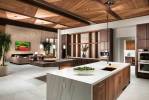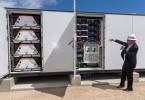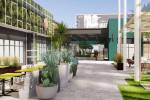Passive solar design principles remain valid through the ages
There are some basic building principles that, when applied correctly, can greatly reduce the energy required to keep a home (or any building) warm in winter and cool in summer. Once applied, these techniques provide benefits year after year with no additional cost. I'm referring to the principles of passive solar design.
Long before the creation of suburbia, humans lived with the seasons, learning to take advantage of the Earth's natural rhythms to make life more comfortable. Examples abound, like the Southwest's ancient, indigenous cultures, including the Anasazi, who built magnificent cliff dwellings that effectively used passive solar design strategies.
The primary principle they used was proper orientation. A south-facing cliff with an overhang provided an ideal location. Here's why: In summer, the path of the sun is very high in the sky, almost directly overhead. During the heat of summer, the overhanging cliff provided much needed shade throughout the day, keeping things cooler and more comfortable. In winter, the sun's path is low in the sky. This allowed the sun's rays to come in under the overhang, directly hitting the walls and windows of the cliff dwellings, providing necessary warmth and light. Southern orientation is the concept that makes this work.
The second principle is the use of thermal mass. This is simply a way to store and release thermal energy. Remember, the key word here is passive. There are no moving parts or high-tech electronics required. When sunlight strikes a surface, some of the energy turns into heat. Some materials can absorb and store this energy better than others. In the case of our cliff dwellers, their stone walls were perfect for absorbing excess heat during the day. During the cool night, this energy would radiate back into the structure, providing warmth.
In the modern version of passive solar design, the proper use of insulation rounds out the basic principles by improving performance of a passive solar structure.
So what does all this mean to us here in the modern metropolis of Southern Nevada?
First of all, we can design homes and buildings that require so little energy that their needs can easily be met with a small, and thus more affordable, renewable energy system. The homes of the future will all be zero-energy homes. It's time to begin building them now; other communities have already started.
Secondly, we can use the knowledge of passive solar design to aid us when buying an existing home. This has worked quite well for me in my current and previous residences, providing significant energy savings over other, similar homes that did not meet simple passive solar criteria.
Here are a few ideas you can use if you are looking for an existing home to take advantage of passive solar benefits:
Look for a home that has a good percentage of the windows facing south, or close to it. A slight overhang above is also desirable. These windows will provide light and warmth in winter while being mostly shaded in the peak of summer. Think carefully before buying a home with lots of windows that face east or west, unless they are shaded by a very deep overhang or porch. These windows get full morning or afternoon sun in summer, effectively turning the home into a solar oven.
Most homes in Southern Nevada have slab foundations. Finished concrete or tiled floors can act as thermal mass, improving comfort and performance by smoothing out temperature swings. If these floors can catch some direct sunlight in winter, all the better!
Good insulation improves performance. Many older homes can benefit from a good layer of sprayed cellulose in the attic. It is a good idea to check, seal and insulate air ducts before applying the extra insulation. Also, don't forget that windows can insulate as well. Energy Star-rated windows with low-e coatings are best. Many older homes have double-pane, aluminum-framed windows that do not perform nearly as well.
Add some strategic shading to outdoor areas that get a lot of summer sun, especially in the afternoon. I planted a tree that shades the one west-facing window in my home during the summer when the sun is most intense. In winter, the deciduous tree loses its leaves to allow plenty of light into the house when we really want it.
Each of these strategies is part of the overall concept of passive solar design. Homes that combine them effectively will perform well, working with nature to provide comfort with less cost. Many of our best ideas for the future originate from the wisdom of the past. Part of the Anasazi legacy is the wisdom of passive solar design. They understood the value of green living.
Steve Rypka is a green living consultant and president of GreenDream Enterprises, specializing in renewable energy, green building, alternative transportation and lifestyle choices for both residential and commercial clients. The company is committed to helping people live lighter on the planet. Rypka can be reached via e-mail at steve@greendream.biz. More information relating to this column is posted at www.greendream.biz.























